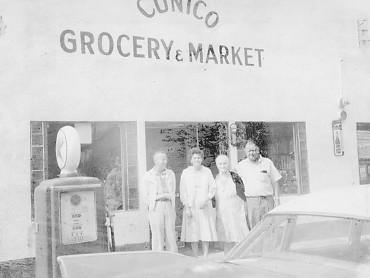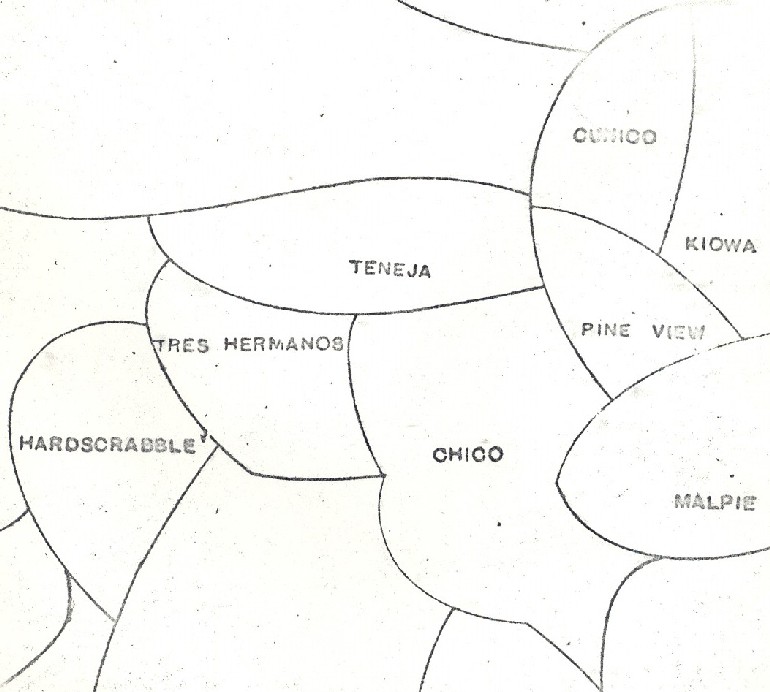|
New Mexico Homesteads
Grocery Store in Sopris, Colorado (owned by Crist's Grandfather)
COAL MINING HISTORY Huge coal deposits beneath the hills and mountains around Trinidad CO, south to the Raton NM, west along the Pugatorie River Valley and north to Walsenburg CO brought many settlers. By the turn of the century, Colorado Fuel and Iron had acquired the mineral rights and numerous mines were in operation. With this industry booming came the immigrants with the promised work in those mines. Mining camps sprouted all along the river valley west of Trinidad: Sopris, Cokedale, Segundo, Valdez, and Tercio were among dozens. Most of them were company towns, where houses, stores, and recreational buildings belonged to the CF&I The miners were often paid in script, redeemable only at the company store. Wages were low and the work was hard, primarily pick and shovel. Coal mining in Las Animas County continued to expand and thrive through early 20th Century. Along with the growth came problems. Miners began to rebel against low wages and harsh working conditions. This led to strikes in 1913-1914 and armed conflict between striking miners and the Colorado militia sent in by the governors. The strikes culminated in the tragic Ludlow Massacre April, 1914, when miners , women and children died. The strike/s played a key role in better conditions.
A gradual decline in coal mining
operations in Las Animas County began in the 1930's, accelerated in the
1950-60's until only the Allen mine was in operation. It was many years
before people faced the reality that the "King" coal mining industry would
not rebound. Today most of the camps are ghost towns. The memories remain
forever part of the heritage of Trinidad and Las Animas County. |


